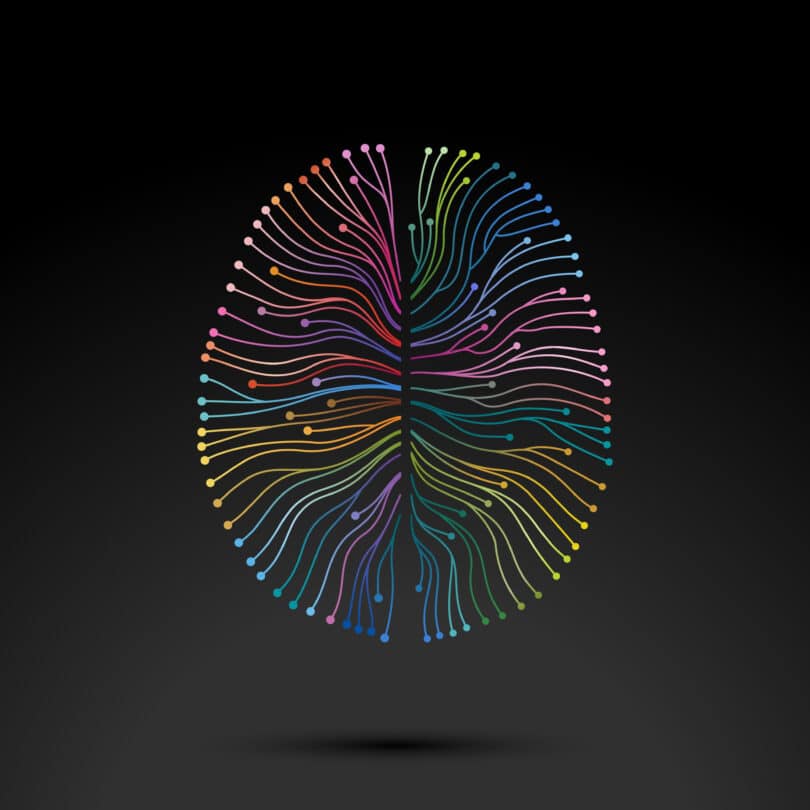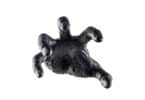The Beckley Institute started it off a few years ago with a study into DMT effects on the brain using EEG and fMRI technology. It was the first of its kind. A recently released study backs up many points made by Beckley’s investigation, while also going off in its own direction.
The new study into DMT effects on brain
The newest research to give us a look at the inner-workings of DMT on the brain, is called Human brain effects of DMT assessed via EEG-fMRI. The placebo-controlled study used fMRI technology, along with EEG technology, to measure changes in different aspects of brain function. Its not the first of its kind, and follows a few years after a study put out by the Beckley foundation. It works to reinforce some of the information gained from the previous study. We’ll get to similarities and differences in results, a bit later.
This particular study used 20 healthy participants, who were given the DMT intravenously. The participants were given either 20mg of DMT or placebo. The fMRI and EEG tests were done simultaneously, and took place before administration of DMT, during administration, and after. The readings started eight minutes before the compound (or placebo) was given, and went on for 20 minutes after administration. DMT is a very short acting drug, especially when given intravenously. The half-life is well under a half hour, and effects are felt nearly immediately.
fMRI and EEG technology perform different functions, which are both useful in investigation of this topic. fMRI measures brain activity by looking at blood flow increases and decreases in different parts of the brain. This shows where the brain is most active at different times, and the activity between different parts of the brain. An fMRI is an imaging scan of the brain, and the results show the image of a brain, with different parts lit in different ways to show different levels of activity.
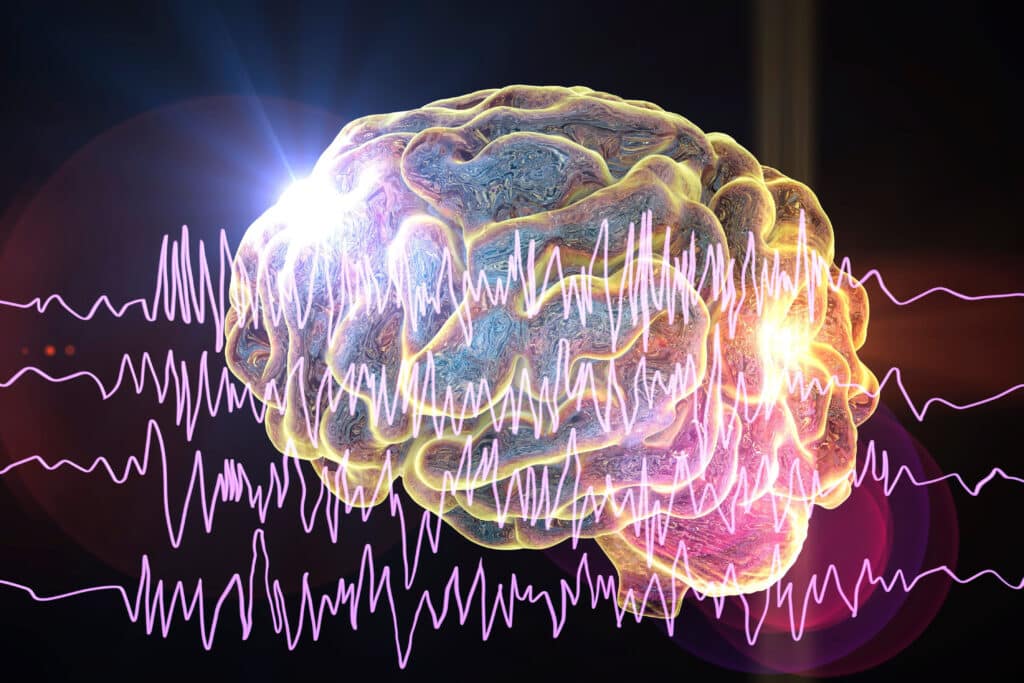
An EEG measures the electrical impulses in the brain. It doesn’t create an image, but rather a readout of what look like squiggly lines. These lines represent brain waves, and an EEG readout shows increases and decreases in different kinds of waves. This helps us understand which parts of our brains are most active electrically at a given time. It’s performed by putting electrodes on the scalp.
DMT or Dimethyltryptamine, is one of four psychedelic compounds. It’s compatriots in the classing are LSD, mescaline, and psilocybin. Other hallucinogenic compounds are grouped according to other characteristics or modes of action, even if they are similar, like MDMA. Both MDMA and psychedelics have the greatest effect on 5-HT2A serotonin receptors. Hallucinogens like ketamine have a bigger effect on NMDA receptors, whereas Amanita muscaria is most active at GABA receptors.
What does the study show us about DMT and the brain?
This study did well to back up some of the previously learned information about how DMT affects the brain, while offering new information. The study works to back up that there is network disintegration and desegregation; a decrease in alpha waves; an increase in spontaneous signals, both in complexity and entropy; altered traveling waves; increased delta and gamma waves; and greater global functional connectivity (GFC).
Scientists refer to the totality of action as a “global brain action,” which they attribute to psychedelics in general. This implies “dysregulation of activity in the brain’s transmodal association cortex pole (TOP).” They go on to say their current results “now point toward a signature global brain action of psychedelics that is robust, reliable, unique, and revealing, not just of ‘psychedelic consciousness’ but of conscious experience more broadly.”
Investigators explain the psychedelic experience as “a drug-induced collapse of the defining principal gradient of the brain, such that its transmodal association cortex pole becomes less segregated from—or more integrated with—the rest of the cortex.” In other words, it creates a lot of chaos that seems to increase communication in the brain.
Results indicate that the dysregulation (impairment of a regulatory mechanism) of brain activity, seen through things like decreased alpha and increased gamma, are “associated with increased global functional connectivity at the brain’s TOP.” This, they say, indicates that those on psychedelics are thinking with “a more entropic mode of brain functioning.” This means they’re more likely to think in a random or chaotic way. It was also found that DMT use “correlated with a state of increased global connectivity,” and that DMT is likely more about altering consciousness, than simply reducing it.
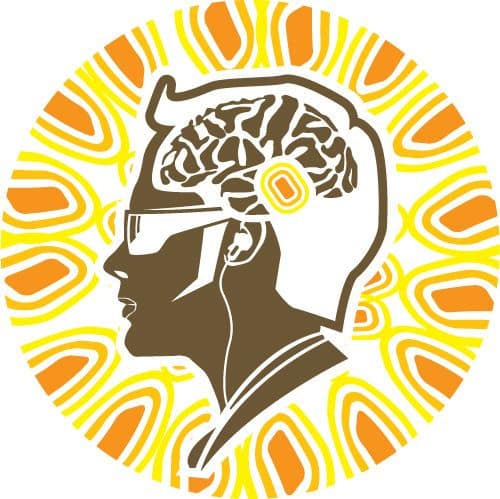
The study “found a significant relationship between changes in global functional connectivity induced by DMT and ratings of intense subjective effects.” This indicates that the more connectivity in the brain, the greater the subjective effects experienced by the person.
The study also looked at “entropic brain hypothesis,” which questions if psychedelic compounds increase the disarray or randomness of spontaneous brain activity in conjunction with the intensity of an experience. This study found a correlation between the two, indicating that such an increase in brain entropic activity is related to the richness of the experience.
DMT was found in some imaging results to be consistent with an increase in arousal; this corresponds to things like the decrease in alpha waves. They note that this didn’t effect drowsiness ratings and the effects between conditions; and that “findings of increased delta power and associated hyperconnectivity are inconsistent with either increases in arousal or decreases in drowsiness.” While DMT can mirror LSD and psilocybin in terms of altered brain function, previous studies on those compounds did not look at arousal.
Its thought that some aspects of altered brain function, like global functional connectivity, might be something specific to psychedelics. However, investigations into drugs like ketamine, do tend to show some similar results. What might be specific to DMT, is the increase in delta waves, (or as per a different study, the increase in delta and theta waves) which isn’t seen as distinctly – as of yet – with other psychedelics. As many other hallucinogenic substances have not undergone such testing, it can’t be ruled out that other non-psychedelic hallucinogens could also have this property.
Investigators end with this thought: “This study’s results consolidate the view that psychedelics target and dysregulate developmentally and evolutionary recent cortex. Moreover, they imply that the normal functioning of this high-level cortex may be necessary for the preservation of human-specific psychological faculties, but not wakeful conscious experience itself.”
What this has in common with previous research
In 2019, the Beckley Foundation put out a study which used EEG primarily, along with fMRI, to see how DMT affects the brain. The two studies obviously have some similarities, and also some differences. For example, the Beckley study did nothing to measure or investigate arousal.
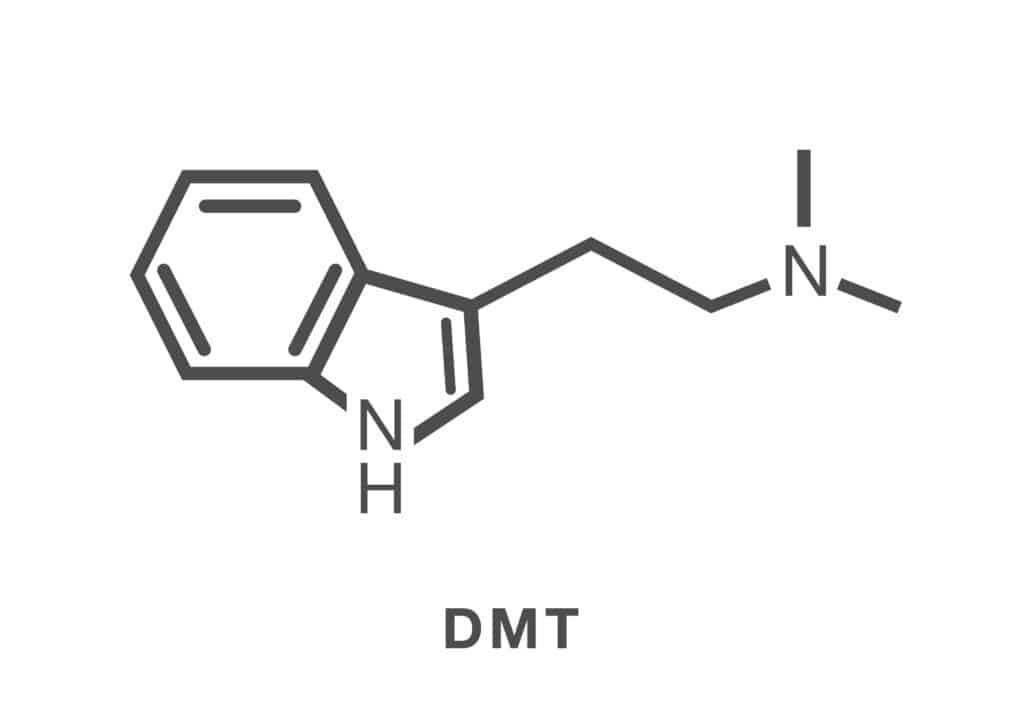
They do have in common many findings. Increased alpha waves seem to be something relevant to psychedelics in general, and is documented in both DMT studies, as well as studies on other psychedelic compounds. Another main similarity is the increase in delta waves, and the increase in brain connectivity.
In scientific research, it sometimes means very little to get a result, when there’s nothing to compare it to. Continued research into a topic, and consistent results, help us to understand a subject better, and give credence to the results found. In this case, the results do not conflict, and the more recent study acts as reinforcement to previous results. This helps build the case overall. Think about how little is understood about standard antidepressants, and how they work; or if they do at all. Yet now we have a growing set of research into DMT, with an actual look, by more than one investigation team, into what it does in the brain.
Different researchers focus on different things though. The more recent study, for example, speaks a good bit about increased gamma waves, and that this is a major aspect of brain dysregulation. But not much is said about theta waves in the whole study. On the other hand, the Beckley study found more interest in these waves, and philosophized more on what these brain changes mean in terms of the power of the trip. They speak about “A novel delta/theta rhythmicity” emerging during the breakthrough period, something they relate to complex visionary experiences.
They also point out “The emergence of theta/delta oscillations, particularly in medial temporal lobe sources, has been classically associated with REM sleep dreaming and related ‘visionary’ states.” It is this increase in theta/delta and decrease of alpha, which they postulate is responsible for the ‘DMT breakthrough experience.’ Through this they make the comparison of exogenous vs endogenous thinking, and propose that DMT forces the brain from the former to the latter. The newer study doesn’t get into any of this. It doesn’t touch at all on the similarities between REM dreaming and the DMT experience, the role of theta waves, or exogenous vs endogenous thought.
While they admit its speculative, researchers in the previous study propose “the emergent theta/delta rhythmicity under DMT (also observed in a non-controlled field study) may have a deep (e.g. medial temporal lobe) source and reflect the recruitment of an evolutionarily ancient circuitry that has been classically associated with REM-sleep and medial temporal lobe stimulation – both of which are known to feature complex visionary phenomena.”
Conclusion
A compound like DMT is quite complex, and it could take hundreds more studies to really flush out what it does in the brain. While these two studies agree on certain points, they also have their own focuses. This brings up new questions, of course, for which we must wait for further research, to get more answers.
Check out Part 1 for more information into research on DMT and the brain.
Hey guys! Thanks for joining in at Cannadelics.com; an independent news publication that focuses on bringing you the best reporting for the burgeoning cannabis and hallucinogen spaces, and beyond. We’ll keep you up on everything, so come ’round regularly. And remember to sign up to the Cannadelics Weekly Newsletter, for the best in product promotions, along with the news.


